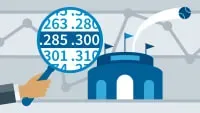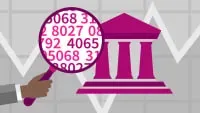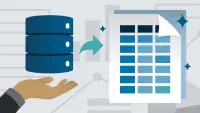
R Programming in Data Science: Setup and Start

This tutorial provides an overview of the different versions of R available and how to install them, as well as how to install useful R packages for data science. It is a great resource for those looking to get started with R programming in data science.▼
Course Feature
![]() Cost:
Cost:
Free Trial
![]() Provider:
Provider:
LinkedIn Learning
![]() Certificate:
Certificate:
No Information
![]() Language:
Language:
English
![]() Start Date:
Start Date:
Course Overview
❗The content presented here is sourced directly from LinkedIn Learning platform. For comprehensive course details, including enrollment information, simply click on the 'Go to class' link on our website.
Updated in [March 06th, 2023]
This course provides a quick and easy introduction to the many flavours of the R programming language. Participants will learn about base R, tidyverse R, R Open from Microsoft, and Bioconductor R. Additionally, the course will cover programming with R interactively and from the command line, as well as some useful packages for working with SQL, 3D graphics, data, and clusters in R. By the end of the course, participants will have installed a version of R, as well as a few core libraries and an optimised IDE.
[Applications]
The application of this course can be seen in the use of R programming for data science. It can be used to create data visualisations, analyse data, and build predictive models. Additionally, it can be used to create interactive web applications and to develop machine learning algorithms. Furthermore, it can be used to develop statistical models and to create data-driven applications. Finally, it can be used to develop data-driven decision-making tools.
[Career Paths]
1. Data Scientist: Data Scientists use R programming to analyze large datasets and uncover insights. They use statistical methods to identify patterns and trends in data, and develop predictive models to forecast future outcomes. Data Scientists also use R to create visualizations to communicate their findings.
2. Machine Learning Engineer: Machine Learning Engineers use R programming to develop and deploy machine learning models. They use R to build algorithms, train models, and evaluate performance. They also use R to deploy models into production and monitor their performance.
3. Business Intelligence Analyst: Business Intelligence Analysts use R programming to analyze data and create reports. They use R to query databases, create visualizations, and develop dashboards. They also use R to develop predictive models to forecast future outcomes.
4. Research Scientist: Research Scientists use R programming to analyze data and develop models. They use R to develop algorithms, train models, and evaluate performance. They also use R to create visualizations to communicate their findings.
[Education Paths]
1. Bachelor of Science in Data Science: This degree path provides students with a comprehensive understanding of data science, including the fundamentals of data analysis, data visualization, machine learning, and data engineering. Students will also learn how to use various programming languages, such as R, Python, and SQL, to manipulate and analyze data. This degree path is becoming increasingly popular as businesses and organizations become more reliant on data-driven decision-making.
2. Master of Science in Data Science: This degree path provides students with an advanced understanding of data science, including topics such as data mining, predictive analytics, and artificial intelligence. Students will also learn how to use various programming languages, such as R, Python, and SQL, to manipulate and analyze data. This degree path is becoming increasingly popular as businesses and organizations become more reliant on data-driven decision-making.
3. Doctor of Philosophy in Data Science: This degree path provides students with an in-depth understanding of data science, including topics such as data mining, predictive analytics, and artificial intelligence. Students will also learn how to use various programming languages, such as R, Python, and SQL, to manipulate and analyze data. This degree path is becoming increasingly popular as businesses and organizations become more reliant on data-driven decision-making.
4. Certificate in Data Science: This degree path provides students with a basic understanding of data science, including the fundamentals of data analysis, data visualization, machine learning, and data engineering. Students will also learn how to use various programming languages, such as R, Python, and SQL, to manipulate and analyze data. This degree path is becoming increasingly popular as businesses and organizations become more reliant on data-driven decision-making.
Course Provider






